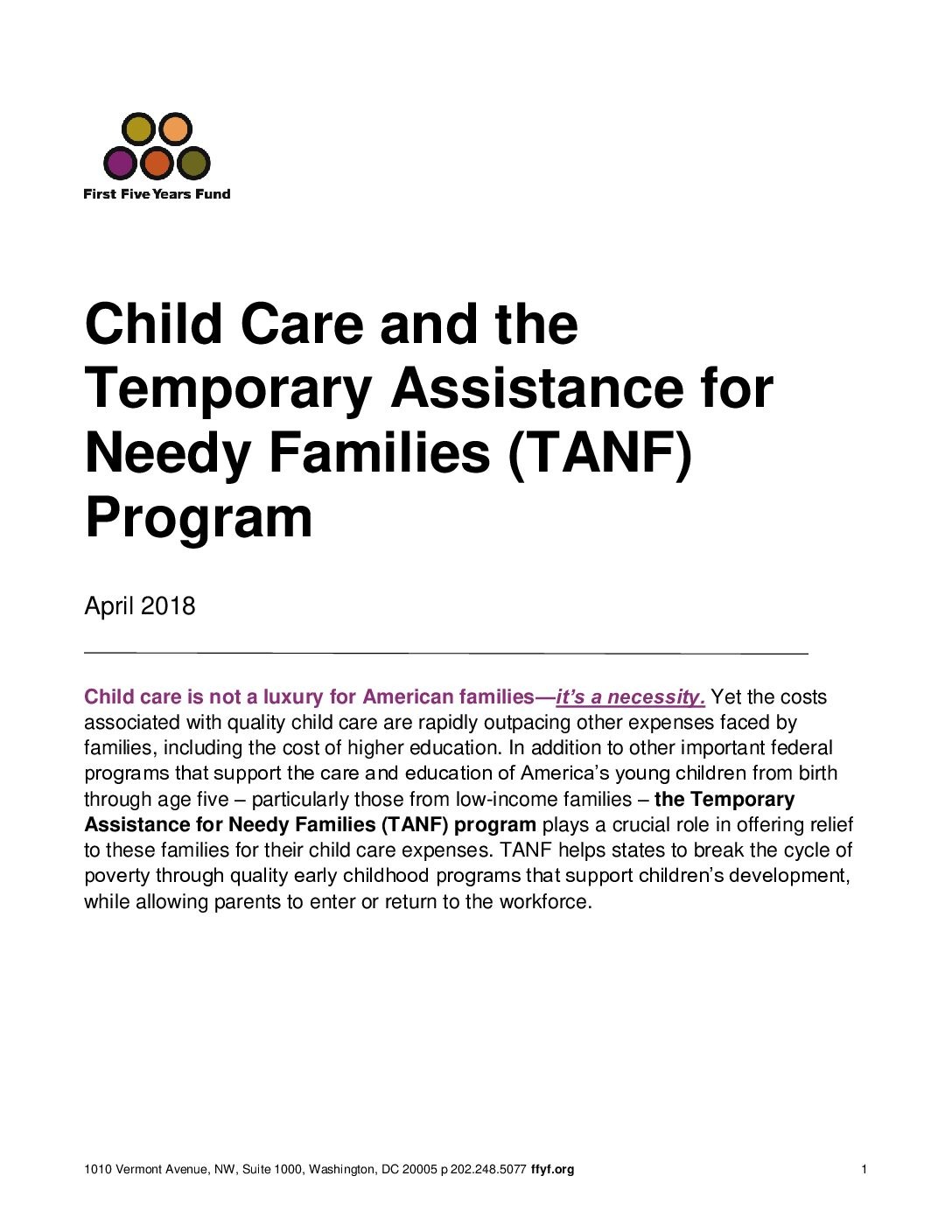Child care is not just a convenience for American families; it’s an absolute necessity. The escalating costs of quality child care are surpassing many other family expenses, even higher education. Alongside vital federal initiatives supporting early childhood care and education for children from birth to five, especially those in low-income households, the Temporary Assistance for Needy Families (TANF) program is crucial in alleviating child care burdens. TANF empowers states to break cycles of poverty by investing in early childhood programs that foster child development while enabling parents to join or rejoin the workforce. In essence, Another Word For Temporary Care Program Is often needed when discussing support systems that provide crucial, short-term assistance to families, and TANF perfectly embodies this concept within the realm of child care.
The Indispensable Role of Quality Child Care
Extensive research consistently highlights high-quality early childhood education as a highly effective investment for families and communities. The outcomes are clear: these programs set children on a path to academic success and productive adulthood. Children experiencing adversity in their early years, particularly those in poverty, face heightened risks of impaired brain development. This can lead to lasting challenges in learning, behavior, and overall physical and mental well-being. Early intervention and prevention through quality early learning and care are vital. They provide the necessary support for children to build a strong foundation for school, fostering healthy cognitive, social, and emotional development.
Regrettably, fewer than half of children from low-income families have access to these transformative early childhood programs that could significantly improve their future prospects. For families eligible for TANF support, the cost of quality child care remains prohibitively expensive.
TANF: A Closer Look at This Support System
Established in 1996, TANF replaced Aid to Families with Dependent Children (AFDC), a welfare program for low-income families with children dating back to 1935. Since its inception, federal regulations have allowed TANF funds to bolster a wide array of child care and early education initiatives across states. While states have considerable autonomy in allocating these block grant funds, their spending must align with the program’s core objectives. These objectives are to:
- Provide aid to needy families, enabling children to be cared for in their own homes or with relatives.
- Reduce the dependence of needy parents on government aid by promoting job readiness, employment, and marriage.
- Prevent and reduce out-of-wedlock pregnancies, setting annual targets for pregnancy prevention.
- Encourage the formation and preservation of two-parent families.
Leveraging TANF Funds for Early Care and Education
Current legislation grants states the flexibility to use TANF funds to support low-income families by enhancing their access to child care and early education. States can transfer up to 30% of their TANF funds to the Child Care and Development Block Grant (CCDBG), which offers child care assistance to disadvantaged families and funds quality improvement initiatives. The Department of Health and Human Services (HHS) has clarified through regulatory guidance that states can also directly allocate TANF funds to early education programs. This funding is intended to supplement, not replace, existing state and local initiatives aimed at broadening educational supports, including child care, pre-kindergarten, Head Start, and kindergarten.
Across the country, states are actively working to expand access to high-quality early learning and care for children from birth to age five, particularly those from low-income backgrounds. Significant progress at the state and local levels has been fueled by strong federal partnerships focused on expanding access and improving quality. Federal support for early learning primarily funds programs like Head Start/Early Head Start, the Child Care and Development Block Grant, and the Preschool Development Grant program. TANF is especially important as a funding source for child care and early education programs serving low-income families. Recognizing this importance, every state and the District of Columbia allocates some TANF funding to these crucial programs.
- Nationally, in FY 2016, 24% of state TANF spending and transfers—nearly $7.5 billion—went to child care and early education programs.
- States directed 16.6% ($5.12 billion) towards child care and 7.5% ($2.31 billion) to pre-kindergarten or Head Start programs.
- Forty-nine states and the District of Columbia utilized TANF funding for child care programs, and over half of the states used TANF to support early education and Head Start.
 A pie chart illustrating TANF spending distribution, highlighting the portions allocated to child care and early education programs.
A pie chart illustrating TANF spending distribution, highlighting the portions allocated to child care and early education programs.
Congressional Opportunities to Strengthen TANF
As Congress reconsiders the reauthorization of TANF, there’s a vital opportunity to acknowledge the undeniable role of quality early childhood experiences in breaking the cycle of poverty. Congress can take significant steps by:
- Strengthening the link between federal funding and quality programs, including expanding connections to CCDBG for all TANF-funded child care.
- Identifying sustainable child care funding mechanisms to continuously support TANF families.
- Preserving states’ ability to utilize federal funds to enhance their early care and learning initiatives.
- Ensuring states are augmenting, not replacing, their own spending with TANF funds, preventing the supplanting of state spending for low-income families with federal TANF flexibility.
DownloadChild Care and TANF Primer (324.76 kB)
